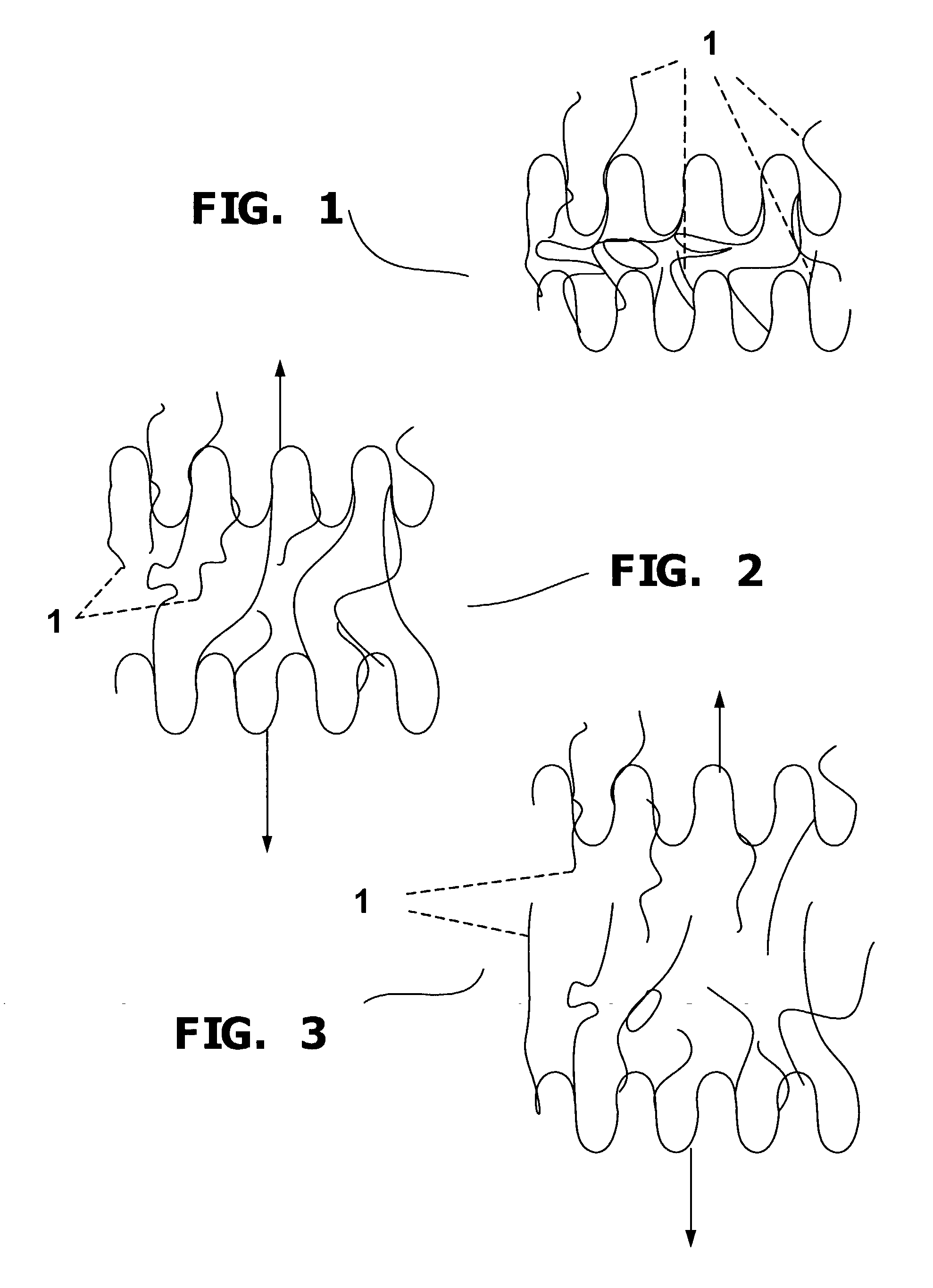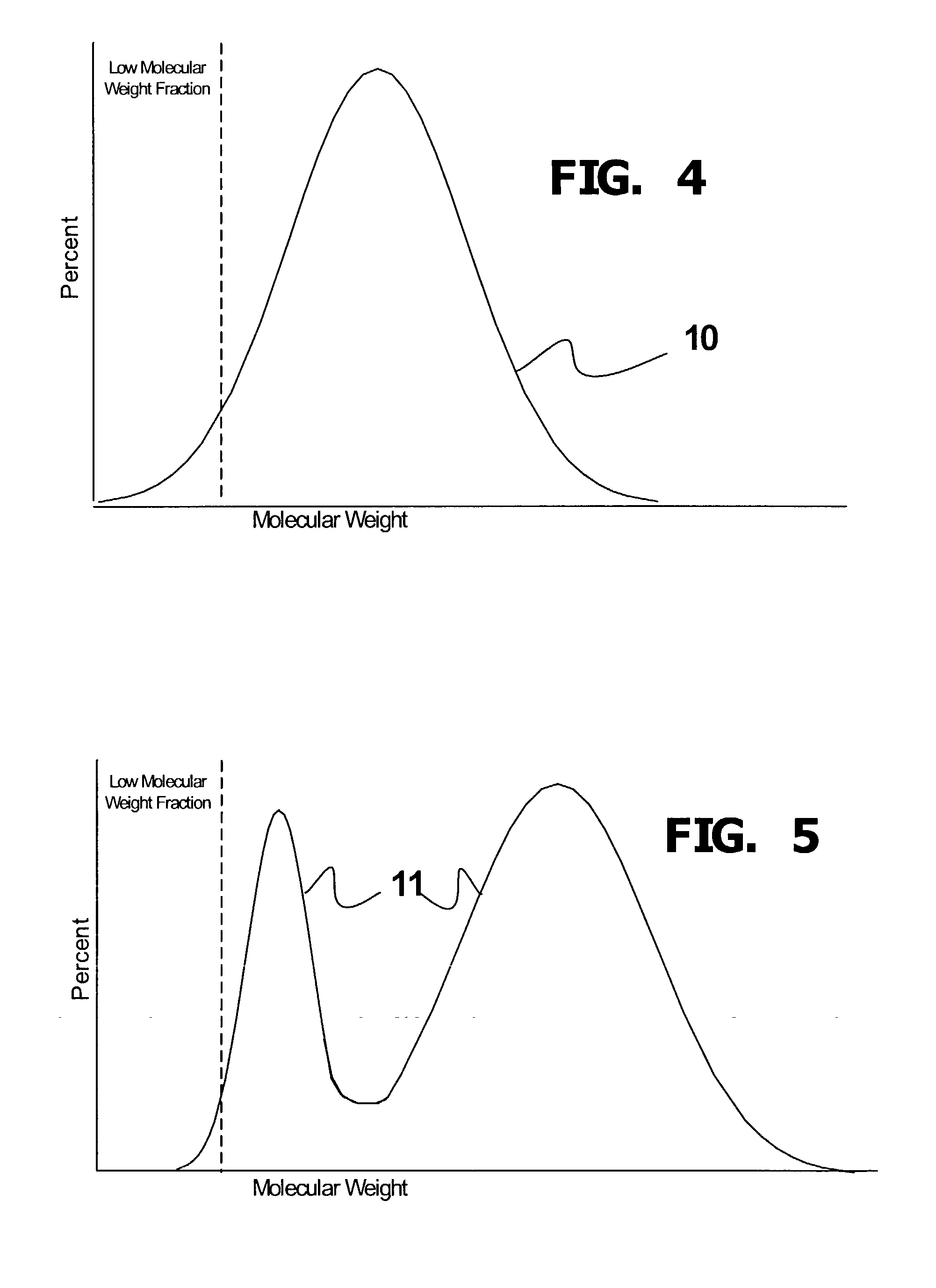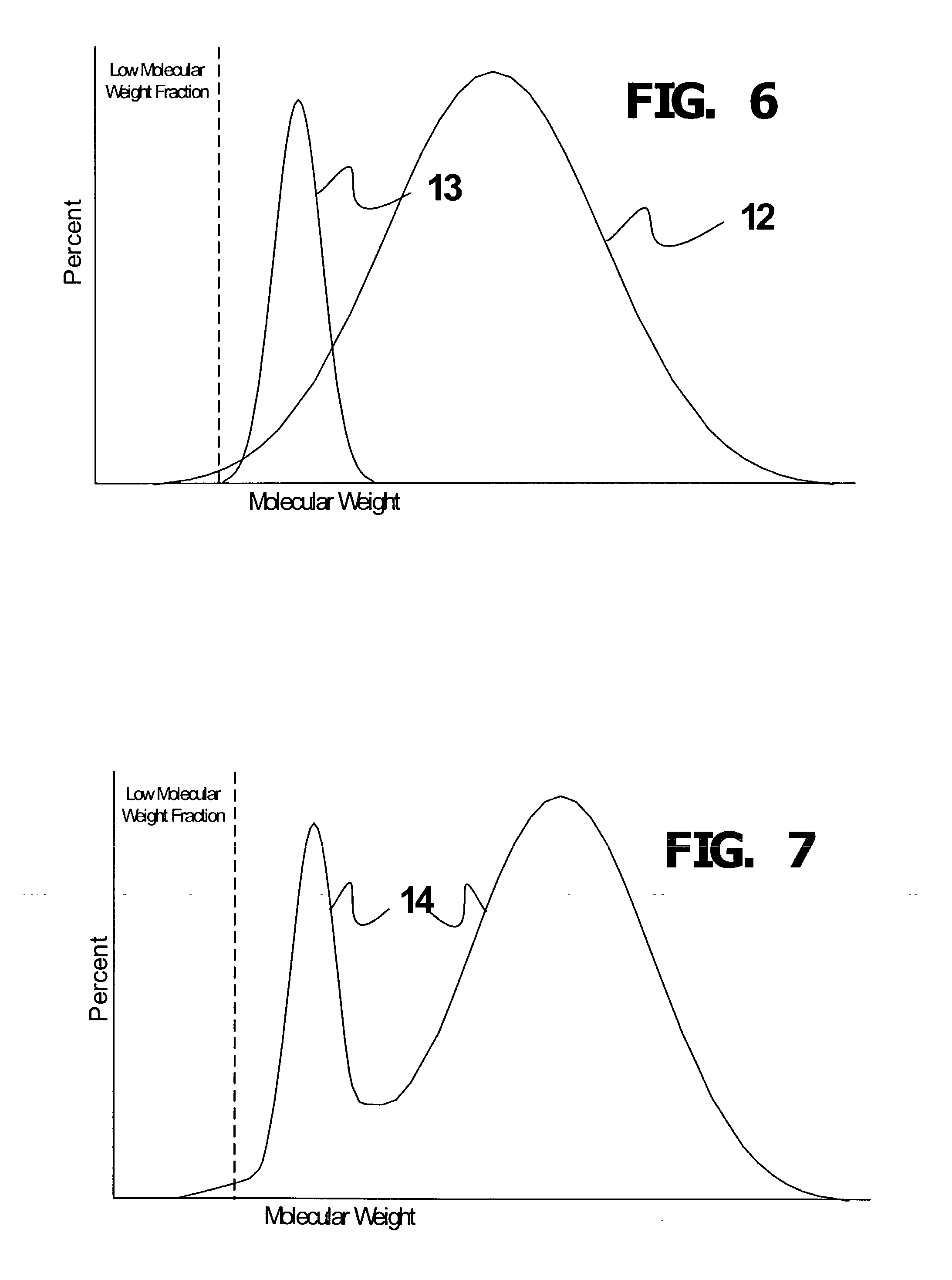Melt blended high density polyethylene compositions with enhanced properties and method for producing the same
- Summary
- Abstract
- Description
- Claims
- Application Information
AI Technical Summary
Benefits of technology
Problems solved by technology
Method used
Image
Examples
example b
[0070]
4 Flexural Weight Density MI Modulus Mw Mn Blend for Density Fraction (gm / cm.sup.3) (gm / 10 min) (psi) (gm / mole) (gm / mole) LMW homopolymer 0.143 0.965 7.7 242122 17600 78800 Bimodal HMW 0.857 0.951 0.0 182548 56295 387782 copolymer Blend of LMW 0.953 0.103 191059 50767 343642 homopolymer and HMW copolymer Flexural Blend for Melt Flow Weight MI Density Modulus Mw Mn Index Fraction (gm / 10 min) (gm / cm.sup.3) (psi) (gm / mole) (gm / mole) Blend of LMW 0.824 0.103 0.953 191059 50767 343642 homopolymer and HMW copolymer LMW copolymer 0.176 4.5 0.953 191059 12400 96200 HDPE composition 0.2 0.953 191059 44000 300000
[0071] The weight average molecular weight and the number average molecular weights in this example were determined by summing the products of the weight fractions and molecular weights of the components.
5 Measured Weight PI = NCTL NCTL Blend Results Fraction Mw / Mn (hours) (hours) LMW homopolymer 0.118 Bimodal HMW copolymer 0.706 LMW copolymer 0.176 HDPE composition 6.82 242.45 ...
PUM
| Property | Measurement | Unit |
|---|---|---|
| Time | aaaaa | aaaaa |
| Pressure | aaaaa | aaaaa |
| Density | aaaaa | aaaaa |
Abstract
Description
Claims
Application Information
 Login to View More
Login to View More - R&D
- Intellectual Property
- Life Sciences
- Materials
- Tech Scout
- Unparalleled Data Quality
- Higher Quality Content
- 60% Fewer Hallucinations
Browse by: Latest US Patents, China's latest patents, Technical Efficacy Thesaurus, Application Domain, Technology Topic, Popular Technical Reports.
© 2025 PatSnap. All rights reserved.Legal|Privacy policy|Modern Slavery Act Transparency Statement|Sitemap|About US| Contact US: help@patsnap.com



